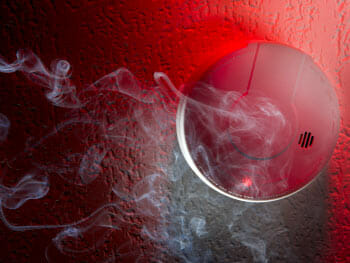
For several years now, e-cigarette manufacturers have been touting the health benefits of their products, which deliver a nicotine-filled mist intended as a substitute for the smoke inhaled from traditional tobacco cigarettes. One e-cigarette trade association figures there are about 3.5 million of the devices in use.
Because they are relatively new to the market, they are not yet regulated by the FDA. That’s sure to change soon, though, due to the number and variety of dangers they pose.
An April 4, 2014, report from the Centers for Disease Control and Prevention describes the increase in calls to poison control centers across the country due to ingestion, inhalation or exposure of eyes or skin to the liquid nicotine. E-cigarette exposure calls per month increased from one in September 2010 to 215 in February 2014. The most common side effects from e-cigarette exposure were vomiting, nausea and eye irritation.
How electronic cigarettes stack up to tobacco products in terms of health issues is under study but is not yet known. The FDA has received reports of adverse events involving e-cigarettes from consumers, health professionals and concerned members of the public, including hospitalization for illnesses such as pneumonia, congestive heart failure, disorientation, seizure, hypotension, and other health problems allegedly due to e-cigarettes.
Even more alarming are the reports of explosions and fires caused by the devices or their battery chargers:
- In February 2012, an e-cigarette blew up in a Florida man’s face. He was hospitalized with severe burns and lost his front teeth and part of his tongue. The local fire chief described it as “trying to hold a bottle rocket in your mouth when it went off.” The exploding rechargeable lithium battery also burned carpeting and furniture in the man’s home.
- Idaho fire investigators blamed a November 2013 house fire on an e-cigarette plugged into a laptop for recharging. It overheated and exploded, sending burning parts onto the furniture while the family of four were asleep. Fortunately they were awakened by the smoke alarm.
- An e-cigarette explosion in Utah in October 2013 left a child with first and second degree burns. In that same month, an e-cig plugged into a computer erupted in a shower of sparks for a Minnesota man. The owner said seconds later it “shot out like a missile,” catching the carpet on fire.
- In January 2014, a Phoenix house fire was blamed on an overheated e-cig charger. The owner said he had read the instructions that came with it but they did not specify how long it was safe to leave the charger plugged in.
The rigid, plastic “smokeless” devices include a small battery and a cartridge of liquid nicotine. The battery generates an electric charge when the user inhales, and the charge sets off nicotine-filled vapor in the plastic tube. While disposable e-cigs are available, many people prefer to use rechargeables. There are several recharging methods, but the equipment is not interchangeable. A wall charger should not be used in a car adapter; chargers meant for car use should not be plugged into a laptop.
Safety experts provide the following advice:
- Educate yourself about the proper use of your particular device and use only the charger specified.
- Do not overcharge. When the charger light indicates the battery is fully charged, unplug it.
- Do not leave the device unattended and do not leave it to charge overnight while you are asleep.
- Do not place the charger on a combustible surface.
- Do not dispose of lithium batteries in the trash. (Read our blog about battery safety here.)
At the Law Offices of Steven H. Heisler, Baltimore product liability lawyer, we have spent more than two decades assisting people who were injured by dangerous consumer goods. E-cigarettes are not harmless, as we are beginning to find out. If you or your loved one has been poisoned, burned or otherwise injured by a vaping device or a defective charger, call us at 877-228-HURT.
